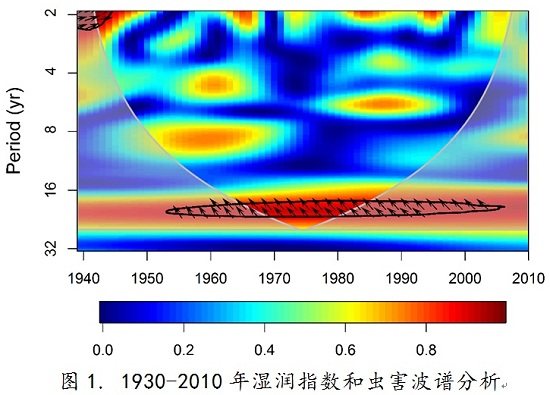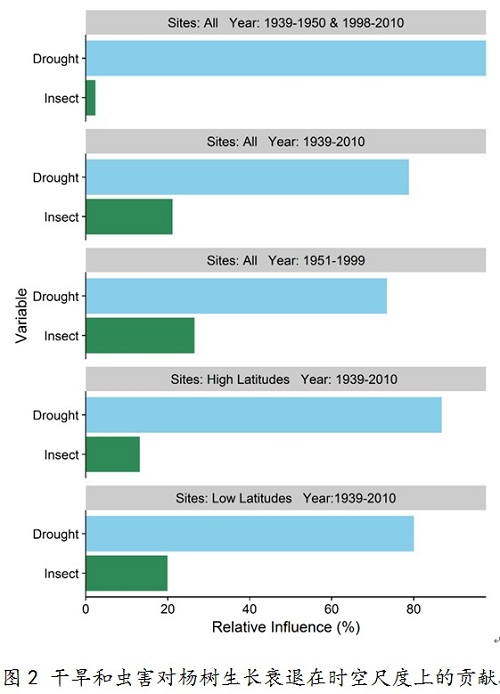The mechanism behind forest decline and death in the northern hemisphere recently being clarified
Insects, diseases, fire and drought and other disturbances associated with global climate change contribute to forest decline and mortality in many parts of the world. Forest decline and mortality related to drought or insect outbreaks have been observed in North American aspen forests. However, little research has been done to partition and estimate their relative contributions to growth declines.
Dr. Jianguo Huang who led the research group of forest ecology and modeling of the South China Botanical Garden of the CAS recently used linear and nonlinear mixed model and wavelet analysis to study tree-ring width and basal area increment series from 40 trembling aspen (Populus tremuloides Michx.) sites along a latitudinal gradient (from 52° to 58°N) in western Canada. They discovered that the influence of drought on forest decline was stronger than insect outbreaks, although both had significant effects. Furthermore, the influence of drought and insect outbreaks showed spatiotemporal variability. In addition, data suggest that insect outbreaks could be triggered by warmer early spring temperature instead of drought, implicating that potentially increased insect outbreaks are expected with continued warming springs, which may further exacerbate growth decline and death in North America aspen mixed forests.
These results have recently been published on Global Change Biology (IF: 8.502).This project was funded by the 100 Talents Program of the Chinese Academy of Sciences (CAS) (No. Y421081001), National Natural Science Foundation of China (Grant No. 31570584 and 41661144007).
For detailed information, please click the following link:http://onlinelibrary.wiley.com/doi/10.1111/gcb.13855/full

Fig 1: Wavelet coherence between climate moisture index and insect outbreaks time series between 1939 and 2010.

Fig 2: Relative contributions of drought and insect outbreaks on the decline in tree-ring width during the period between 1939 and 2010.



